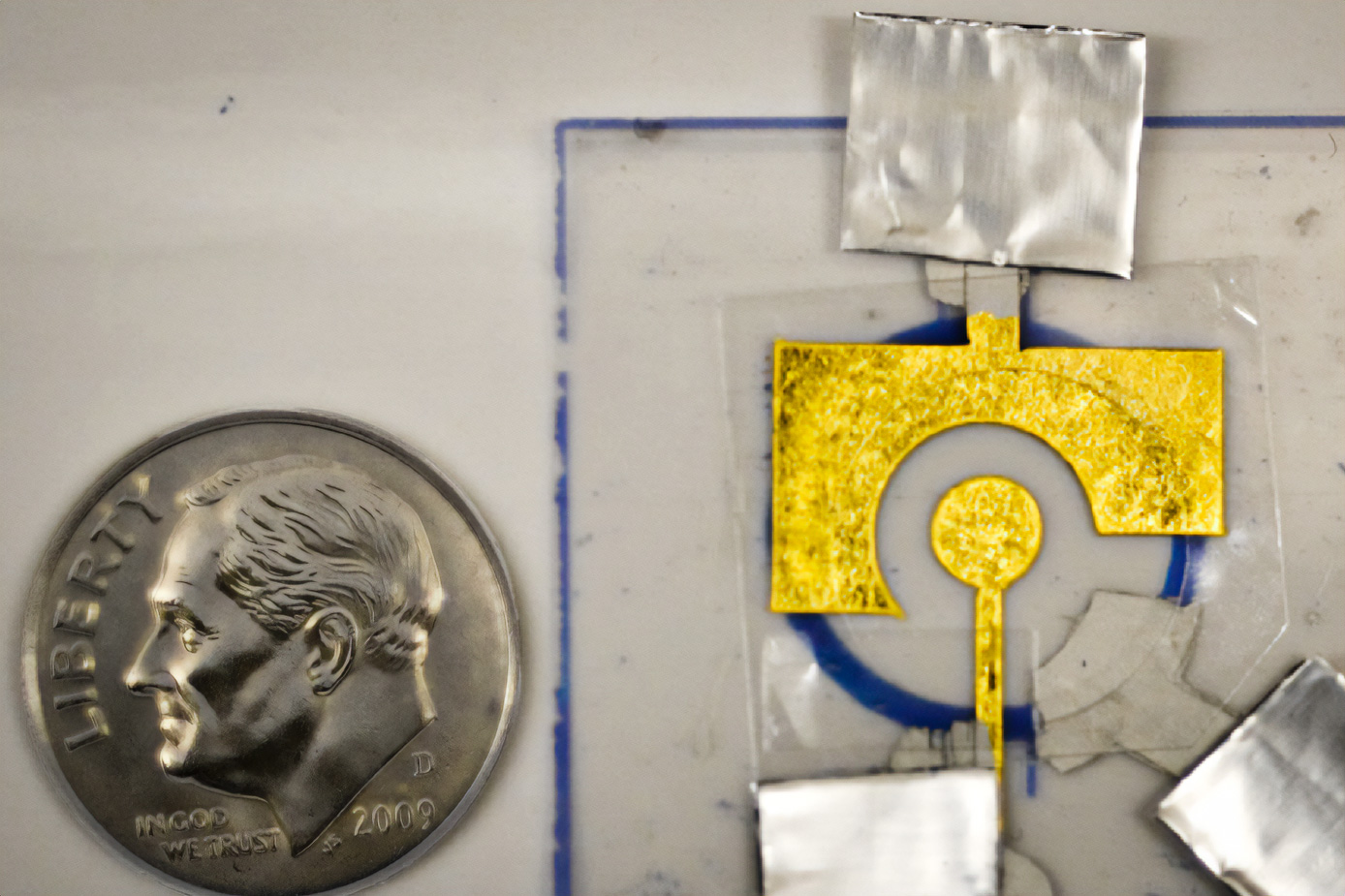Using an inexpensive electrode coated with DNA, MIT researchers have designed disposable diagnostics that could be adapted to detect a variety of diseases, including cancer or infectious diseases such as influenza and HIV.
These electrochemical sensors make use of a DNA-chopping enzyme found in the CRISPR gene-editing system. When a target such as a cancerous gene is detected by the enzyme, it begins shearing DNA from the electrode nonspecifically, like a lawnmower cutting grass, altering the electrical signal produced.
One of the main limitations of this type of sensing technology is that the DNA that coats the electrode breaks down quickly, so the sensors can’t be stored for very long and their storage conditions must be tightly controlled, limiting where they can be used. In a new study, MIT researchers stabilized the DNA with a polymer coating, allowing the sensors to be stored for up to two months, even at high temperatures. After storage, the sensors were able to detect a prostate cancer gene that is often used to diagnose the disease.
The DNA-based sensors, which cost only about 50 cents to make, could offer a cheaper way to diagnose many diseases in low-resource regions, says Ariel Furst, the Paul M. Cook Career Development Assistant Professor of Chemical Engineering at MIT and the senior author of the study.
“Our focus is on diagnostics that many people have limited access to, and our goal is to create a point-of-use sensor. People wouldn’t even need to be in a clinic to use it. You could do it at home,” Furst says.
MIT graduate student Xingcheng Zhou is the lead author of the paper, published June 30 in the journal ACS Sensors. Other authors of the paper are MIT undergraduate Jessica Slaughter, Smah Riki ’24, and graduate student Chao Chi Kuo.
An inexpensive sensor
Electrochemical sensors work by measuring changes in the flow of an electric current when a target molecule interacts with an enzyme. This is the same technology that glucose meters use to detect concentrations of glucose in a blood sample.
The electrochemical sensors developed in Furst’s lab consist of DNA adhered to an inexpensive gold leaf electrode, which is laminated onto a sheet of plastic. The DNA is attached to the electrode using a sulfur-containing molecule known as a thiol.
In a 2021 study, Furst’s lab showed that they could use these sensors to detect genetic material from HIV and human papillomavirus (HPV). The sensors detect their targets using a guide RNA strand, which can be designed to bind to nearly any DNA or RNA sequence. The guide RNA is linked to an enzyme called Cas12, which cleaves DNA nonspecifically when it is turned on and is in the same family of proteins as the Cas9 enzyme used for CRISPR genome editing.
If the target is present, it binds to the guide RNA and activates Cas12, which then cuts the DNA adhered to the electrode. That alters the current produced by the electrode, which can be measured using a potentiostat (the same technology used in handheld glucose meters).
“If Cas12 is on, it’s like a lawnmower that cuts off all the DNA on your electrode, and that turns off your signal,” Furst says.
In previous versions of the device, the DNA had to be added to the electrode just before it was used, because DNA doesn’t remain stable for very long. In the new study, the researchers found that they could increase the stability of the DNA by coating it with a polymer called polyvinyl alcohol (PVA).
This polymer, which costs less than 1 cent per coating, acts like a tarp that protects the DNA below it. Once deposited onto the electrode, the polymer dries to form a protective thin film.
“Once it’s dried, it seems to make a very strong barrier against the main things that can harm DNA, such as reactive oxygen species that can either damage the DNA itself or break the thiol bond with the gold and strip your DNA off the electrode,” Furst says.
Successful detection
The researchers showed that this coating could protect DNA on the sensors for at least two months, and it could also withstand temperatures up to about 150 degrees Fahrenheit. After two months, they rinsed off the polymer and demonstrated that the sensors could still detect PCA3, a prostate cancer gene that can be found in urine.
This type of test could be used with a variety of samples, including urine, saliva, or nasal swabs. The researchers hope to use this approach to develop cheaper diagnostics for infectious diseases, such as HPV or HIV, that could be used in a doctor’s office or at home. This approach could also be used to develop tests for emerging infectious diseases, the researchers say.
A group of researchers from Furst’s lab was recently accepted into delta v, MIT’s student venture accelerator, where they hope to launch a startup to further develop this technology. Now that the researchers can create tests with a much longer shelf-life, they hope to begin shipping them to locations where they could be tested with patient samples.
“Our goal is to continue to test with patient samples against different diseases in real world environments,” Furst says. “Our limitation before was that we had to make the sensors on site, but now that we can protect them, we can ship them. We don’t have to use refrigeration. That allows us to access a lot more rugged or non-ideal environments for testing.”
The research was funded, in part, by the MIT Research Support Committee and a MathWorks Fellowship.
